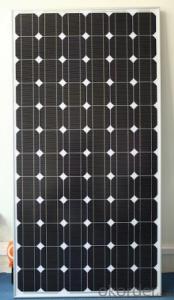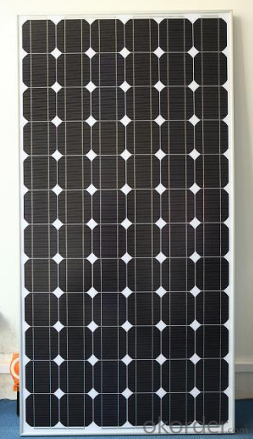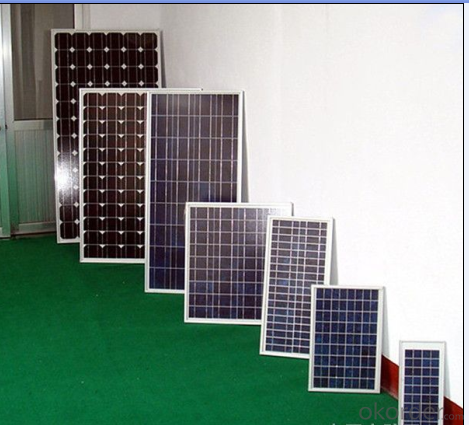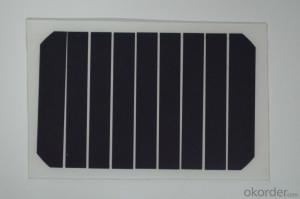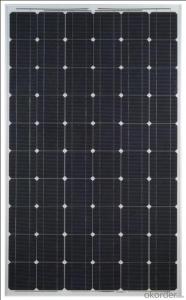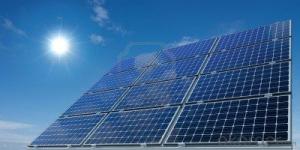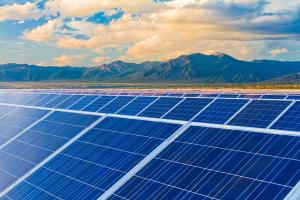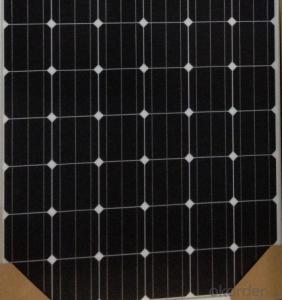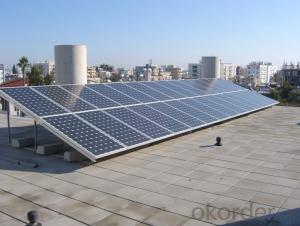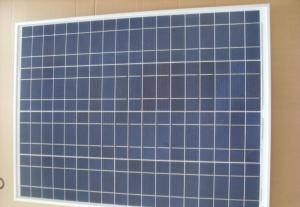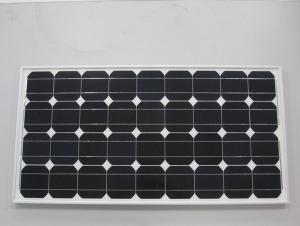Hanwha Q Cells High Efficiency 300W Monocrystalline Solar Panel CNBM
- Loading Port:
- Qingdao
- Payment Terms:
- TT OR LC
- Min Order Qty:
- 10 set
- Supply Capability:
- 300000 set/month
OKorder Service Pledge
OKorder Financial Service
You Might Also Like
Product Name
High Efficiency monocrystalline solar cell price with 25 year warranty
Quick Details
| Place of Origin: | China (Mainland) | Brand Name: | cnbm | Model Number: | PS-M672300 |
| Material: | Monocrystalline Silicon | Size: | 1956*990*40mm | Number of Cells: | 72 pieces |
| Max. Power: | 300W | Weight: | 23kg monocrystalline solar panel | Product warranty: | 25 years |
| Maximum system voltage: | 1000VDC | Tolerance: | 0/+3% | Cable length: | 1.2m |
| Connector: | MC4 compatible connector | Junction box: | IP65 Rated | Frame: | Anodized aluminium alloy |
| Front Cover: | 3.2mm thick.low iron tempered glass | Cell type: | Monocrystalline solar panel cells 156mm |
Packaging & Delivery
| Packaging Detail: | Monocrystalline solar panel packing information 28pcs. / box 20pcs. / pallet 560 pcs. / 40ft 602 pcs. / 40ft (H) |
| Delivery Detail: | in one week |
Specifications
1. Best monocrystalline solar cell price
2. 300W Monocrystalline solar panel with best price
3. 25 years warranty
Product Description
1.Solar Panel Descprition
PS-M672 Series solar panel is connected in series by 70 pieces of 156mm×156mm Mono Crystalline silicon cells. Solar panel performance is produced according to IEC61215, IEC61730 international standard.
2.Solar Panel Characteristics
1)Manufactured according to international quality and Environment Management
System (ISO9001, ISO14001)
2)High efficiency crystalline silicon solar cells
3)High transmission Iow iron tempered glass, strong mechanical resistance
4)Anti-ageing EVA and excellent anti-climate back sheet
5)Anodized aluminum frame improves load resistance capabilities for heavy wind loads.
6)Standard waterproof junction box
7)High endurance to different weather
8)Good and friendly package with less transportation and storage space.
3.Solar Panel Warranty
1)10 years limited manufacturing warranty
2)10 years for 90% of warranted minimum power
3)25 years for 80% of warranted minimum power
4.Solar Panel Electric Characteristics
| Cell Type | Mono Solar Cell 156mm*156mm | |||
| Item | PS-M672285 | PS-M672290 | PS-M672295 | PS-M672300 |
| Power | 285W | 290W | 295W | 300W |
| Voc(V) | 44.8 | 45 | 45.3 | 345.5 |
| Isc(I) | 8.6 | 8.75 | 8.85 | 8.95 |
| Vm(V) | 36.2 | 36.3 | 36.5 | 36.6 |
| Im(I) | 7.87 | 7.99 | 8.08 | 8.20 |
| Cell Efficiency | 17.08 | 17.38 | 17.68 | 17.98 |
| Module Efficiency | 14.72 | 14.98 | 15.23 | 15.49 |
| Fuse | 15A | |||
| Max System Voltage | 1000VDC | |||
| Cell Number | 72cells | |||
| Tolerance | 0/+3% | |||
| Module Size | 1956*990*40(mm) | |||
| Weight | 23KGS | |||
| Cable Length | 0.9m | |||
| Connector | MC4 or compatible connector | |||
Global Projects
20MW Solar Power Plant in China
130KW Solar Power Plant in Japan
700KW Solar Power Plant in Japan
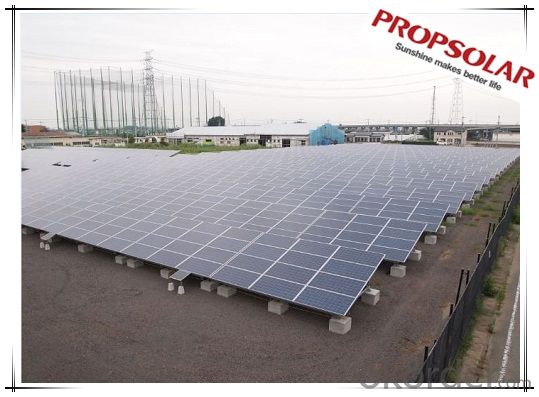
- Q: Where can I find updated info about solar panels for home?
- Of the practical technologies, crystalline silicon is still king. There have been improvements in manufacturing efficiency and price, but the fundamental technology is unchanged. For the past couple decades, there have been startups claiming that they will have a breakthrough available in 2 years, but so far, nothing has beat crystalline silicon for general applications. The appeal of thin-film was its cost, at the penalty of efficiency, but when the prices of crystalline plummeted, the cost argument went away. That wasn't the only problem Solyndra had, but it contributed to the company's demise. Organic solar cells show promise, and might ultimately be very cheap to manufacture, as they don't involve the high-temperature processing that semiconductors do. The main problem today is that they're not stable at the temperature of a hot roof. But then again, a few years ago, organic LEDs were the same way, and now they're commonplace in big TV's. Only time will tell. From a homeowner's standpoint, the install is routine, but still best done by professionals. It's like putting a new roof on a house, or wiring in central air conditioning. For most, it's better to call a pro.
- Q: What materials are solar panels made of?
- Solar panels are typically made of silicon, which is a semiconductor material, along with other components such as metal frames, glass, and protective layers.
- Q: Can solar panels be used in areas with frequent thunderstorms?
- Yes, solar panels can be used in areas with frequent thunderstorms. While thunderstorms may temporarily reduce the amount of sunlight reaching the panels, they are designed to withstand harsh weather conditions, including thunderstorms. Additionally, the intermittent cloud cover during thunderstorms does not completely eliminate solar energy generation, as panels can still capture diffused sunlight.
- Q: How do solar panels affect the overall energy consumption of a building?
- Solar panels can significantly reduce the overall energy consumption of a building. By harnessing the sun's energy and converting it into electricity, solar panels provide a clean and renewable source of power. This reduces the reliance on traditional fossil fuel-based electricity, leading to lower energy bills and a reduced carbon footprint. Additionally, excess energy generated by the solar panels can be stored or fed back into the grid, further offsetting the building's energy consumption.
- Q: How can I know the right type of solar panel to choose for my small village house in Africa?
- The power output of a solar panel uses a formula to determine kilowatts produced per hour per square meter per day. This calculation is important because, if you plan to install a solar power system for your home, you will want to know how many solar panels will be needed. To calculate solar power requirements correctly, you need to gather the data that is needed for the calculation. First you have to find the average amount of solar radiation available for your area. You can use a solar radiation chart. This can range from a 4 to a 7 depending on the area you live in. Write the number down on a piece of paper and indicate it with the letters RA. Next is determine the amount of electricity that you use daily. Add the kilowatt-hours used per month from your utility bill. Multiply this number by ,000 to get the watt hours in a month. Divide the total by 30 for the amount of electricity you use daily. Write this number down and indicate it with the letters DE. Determine the percentage of your home that you want to power with the solar power system. Write this number down and indicate it with the letter P. Determine the system inefficiency factor for the solar power system. You should be able to find this on the brochure for the system or from the manufacturer's web site. Write this number down and indicate it by the letter I. Determine the power or yield that is required for your home. Use the equation P = I x (DE x P) / RA to find the power requirements in kWh. Divide the number from Step 5 by the peak wattage for a single solar panel to determine the number of panels you will need for your home. Goodluck! :)
- Q: Can solar panels be used in areas with high levels of radiofrequency interference?
- Yes, solar panels can be used in areas with high levels of radiofrequency interference. However, it is important to ensure proper grounding and shielding measures are in place to minimize the impact of radiofrequency interference on the performance of the solar panels.
- Q: Can solar panels be used in agriculture?
- Yes, solar panels can be used in agriculture. They provide a renewable and clean source of energy that can power various agricultural activities such as irrigation systems, lighting, and machinery. Additionally, solar panels can be installed on agricultural buildings or unused land, allowing farmers to generate their own electricity and reduce their carbon footprint.
- Q: Can solar panels be installed on a warehouse or industrial facility?
- Yes, solar panels can be installed on a warehouse or industrial facility. In fact, these large structures often have ample roof space, making them ideal for solar panel installations. Installing solar panels on warehouses or industrial facilities can help offset energy costs, reduce carbon emissions, and contribute to a more sustainable energy future.
- Q: Hello,What do you all think about the future of solar panels and what role they will play in the near future. There is tons of money being dumped into the industry and demand is slowly rising. Also do you have any favorite solar links to get more info about them?
- Well, it's true that solar panels aren't exactly the new invention. However, solar technologies keep improving all the time. Just like computers used to be super rare and hard to get, but right now almost everyone has a PC or a laptop. Same with solar panels, soon they will get a lot more popular. Even people like Bill Gates are interested in solar solutions, here, take a look:
Send your message to us
Hanwha Q Cells High Efficiency 300W Monocrystalline Solar Panel CNBM
- Loading Port:
- Qingdao
- Payment Terms:
- TT OR LC
- Min Order Qty:
- 10 set
- Supply Capability:
- 300000 set/month
OKorder Service Pledge
OKorder Financial Service
Similar products
Hot products
Hot Searches
Related keywords
